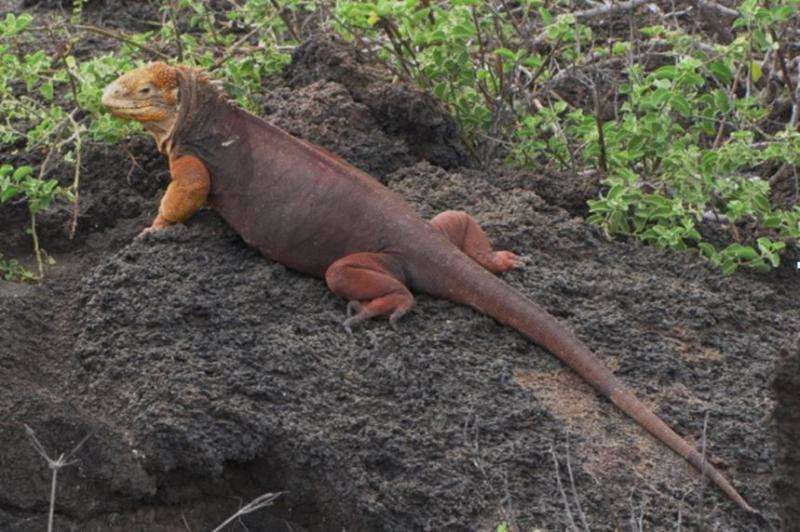Iguanas partner with the plants of the Galápagos Islands

The isolation of ocean islands like the Galápagos prevents the arrival of large mammals, which disperse the seeds of many plants by ingesting them. In the absence of mammals, this function is filled by birds, tortoises, lizards and iguanas. To date, no investigation had been carried out into the role iguanas play with at least ten species of plants.
The survival of many native and introduced plants depends in part on the role of animals in pollination and seed dispersal. The ingestion and subsequent expulsion of seeds in animal faeces means a proportion of them return to the soil at a more distant location.
In addition to birds, the Galápagos giant tortoise is the animal that disperses most of seeds over great distances on the islands, followed by the endemic land iguanas, of which there are three species which feed on fruit and vegetation near ground level, as they do not climb. However apart from anecdotal records, their potential for seed dispersal had not to date been confirmed.
A study published in the journal 'Integrative Zoology' demonstrates for the first time how by dispersing seeds, the Galápagos land iguana (Conolophus subcristatus) contributes to the survival of indigenous and introduced plants plant species on Fernandina Island, which covers 642 km2 of land.
"We knew that female iguanas on this island cover large distances, around 10 kilometres, and climb up to 1,500 metres of altitude to lay their eggs at the island's volcanic crater," SINC was told by Anna Traveset from the Mediterranean Institute for Advanced Studies (CSIC-UIB), the lead author of the study.
A mystery solved by faeces
Between February 2010 and 2011, the researchers collected 160 faeces samples, in which they identified 5,705 seeds from 32 plant species. According to the team, at least 80% of the seeds (around 4,545) were damaged.
With the remaining seeds, which remained intact after passing through the reptile's intestines, the team ran an experiment in which they planted 849 seeds from 29 plant species; only around 4% of these were germinated over 200 days later.
"Considering the local abundance of land iguanas and the large amount of seeds ingested by these animals, even if only a small proportion germinates, they can be considered important for plant dissemination to new areas in this young island," Traveset writes in the article.
In fact, some plants appear to benefit greatly from this action. According to the paper, 63% of the seeds belonged to native plants, a third of which were endemic to the Galápagos Islands. Six per cent were from introduced species and the remainder (31%) could not be identified.
More information: Anna TRAVESET et al. Galápagos land iguana () as a seed disperser, Integrative Zoology (2016). DOI: 10.1111/1749-4877.12187
Provided by Plataforma SINC

















